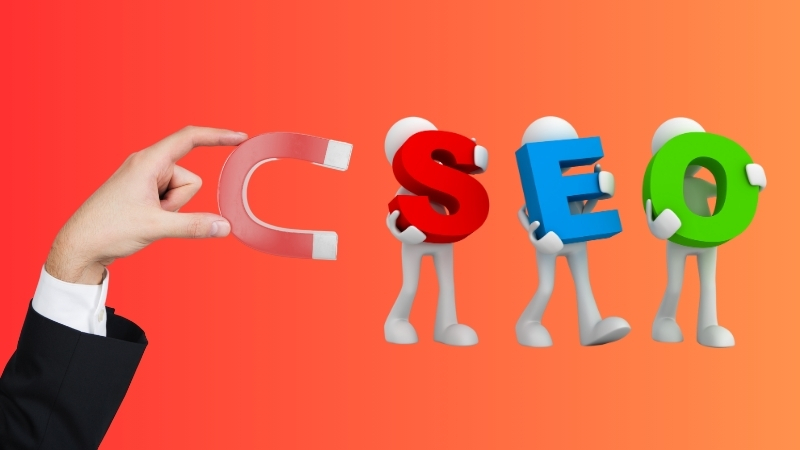Inbound marketing and SEO are not just compatible—they’re interdependent pillars of digital growth. While SEO (Search Engine Optimization) focuses on improving your visibility on search engines, inbound marketing uses that visibility to attract, engage, and convert users with valuable content.
Simply put: SEO drives traffic. Inbound marketing turns that traffic into loyal customers.
Together, they create a self-sustaining funnel: SEO brings in qualified leads organically, and inbound marketing nurtures those leads with content, trust, and conversion opportunities.
Why Do They Work Better Together?
Think of SEO and inbound marketing as two gears in the same machine—when they turn in sync, they generate powerful momentum for your business. While they serve different purposes, their full potential is only realized when they are strategically aligned.
Let’s break this down.
Imagine you’ve optimized your website perfectly for Google—you’re getting tons of traffic. That’s great. But what happens next? If visitors don’t find valuable content, answers to their problems, or a compelling reason to stay, they’ll bounce. Fast.
Conversely, you may have a beautifully written blog or a detailed resource hub—but if no one can find it, it’s like opening a boutique in the middle of the Sahara. No traffic means no leads, no engagement, and no growth.
The Magic Happens When They Work Together
Inbound marketing provides the “why” and “what”—why your brand exists and what valuable solutions you offer.
SEO provides the “how”—how your audience finds you when they’re searching for answers, products, or services.
Let’s look at how these two strategies actively complement one another:
What SEO Delivers
How Inbound Marketing Leverages It
Organic Traffic
SEO ensures your website appears when users search. Inbound marketing turns that traffic into leads with high-quality content, lead magnets, and nurturing funnels.
Keyword Insights
Keyword research helps you discover what your audience is actively searching for. Inbound marketing uses those insights to create blog posts, videos, landing pages, and other content tailored to meet those exact needs.
Search Engine Rankings
A high-ranking blog post is like having a digital billboard on the internet’s busiest street. Inbound capitalizes on that visibility by offering CTAs (calls-to-action), opt-ins, and resources to guide users down the conversion funnel.
Content Optimization
SEO provides technical and structural guidelines for visibility (e.g., meta tags, headers, internal linking). Inbound ensures that structure is filled with valuable, well-written, engaging content that keeps visitors on the page.
A Real-World Scenario
Let’s say you run a CRM software platform.
In this example, SEO got the reader to the door, and inbound marketing welcomed them in and guided them toward conversion.
The Inbound Funnel: SEO’s Role at Every Stage

Top of Funnel (TOFU) – Attract
SEO gets your content in front of new eyes.
Example:
Someone Googles “how to reduce customer churn.” Your blog ranks and appears in the top results.
Inbound Step: Blog post offers value + CTA for eBook download = new lead.
Middle of Funnel (MOFU) – Engage
SEO-optimized landing pages help convert visitors into leads.
Example:
They visit your “Customer Retention Guide” landing page (optimized for “retention strategy”) and fill out a form for a whitepaper.
Bottom of Funnel (BOFU) – Delight & Convert
High-intent searches lead to product or service pages.
Example:
Search: “best CRM for startups” → Your optimized comparison page ranks → User clicks, converts.
Case Study: How GrooveHQ Combined SEO and Inbound Marketing to Drive 400% Organic Growth

GrooveHQ is a customer support software company offering a streamlined help desk solution tailored for small businesses and startups. Competing with giants like Zendesk and Freshdesk, Groove needed a way to punch above its weight without relying on massive ad budgets.
Their challenge?
They had a great product, but not enough people knew about it.
Primary Goal
Groove’s marketing team set a clear goal:
Significantly increase organic website traffic and generate qualified leads through content, not paid ads.
They needed to build long-term visibility, educate their audience, and convert visitors into subscribers and paying customers—all with a lean marketing budget.
Strategy: Combining SEO with Inbound Marketing

Groove’s founder, Alex Turnbull, documented the journey openly on their blog—sharing not only their wins but also their missteps. Here’s a breakdown of what they did:
1. SEO-Driven Content Research
They began with keyword research using tools like Ahrefs and SEMrush to identify:
Example keywords they targeted:
- “How to reduce customer churn”
- “How to write better support emails”
- “SaaS onboarding tips”
These keywords aligned perfectly with Groove’s product value.
2. Publishing High-Value, Story-Driven Content
Instead of just churning out SEO-optimized articles, Groove leaned heavily into inbound content marketing principles:
Inbound Element
How Groove Used It
Storytelling
Alex shared the real, behind-the-scenes struggles of growing Groove as a startup. It humanized the brand.
Transparency
They openly shared metrics, mistakes, and lessons, which built massive trust.
Educational Content
Every post offered tactical, actionable insights (e.g., email scripts, churn reduction tips).
Lead Magnets
They created free guides and email courses tied to each blog post topic.
CTAs
Each post included subtle, relevant calls to action—like signing up for a content series or trying the product.
Their “Startup Journey Blog” chronicled how they aimed to grow Groove to $100K in monthly revenue. This was HUGE for transparency marketing—and it turned casual readers into loyal followers.
3. Email Nurturing and Lead Capture

They used:
Their tone? Friendly, honest, and helpful—not salesy. And it worked.
The Results
Groove’s inbound + SEO strategy paid off in a massive way:
Metric
Result
Organic Website Traffic
+400% increase in just 6 months
Email Subscriber Growth
10,000+ new subscribers
Content Engagement
Posts regularly received hundreds of shares and comments
Brand Trust & Authority
Groove became a go-to SaaS blog for startups
Product Signups
Thousands of leads funneled into free trials via inbound efforts
Why It Worked: Key Takeaways
SEO + Inbound Working Together
Example 1: HubSpot
@sellanythingonline Hubspot is my go-to resource for learning about marketing #hubspot #digitalmarketingtips #learnmarketing #smallbusinessmarketing #spon #hubspotambassador ♬ Roxanne – Instrumental – Califa Azul
HubSpot is the gold standard for inbound marketing. But it’s also an SEO powerhouse.
- Strategy: Long-form, educational blog posts targeting high-volume keywords like “marketing automation”
- Result: Millions of monthly visits from Google, feeding directly into their free tool offers and lead magnets
Example 2: Ahrefs
View this post on Instagram
Ahrefs publishes data-backed SEO blogs like “How to Rank #1 on Google.”
These posts:
Best Tools for Combining SEO and Inbound Marketing
Tool
Purpose
HubSpot
Inbound strategy, lead tracking, automation
Ahrefs
Keyword research, backlink analysis
SEMRush
SEO audits, content gap analysis
SurferSEO
Optimize content for on-page SEO
Yoast SEO
On-page WordPress optimization
ConvertKit
Email engagement + automation
Notion / Trello
Editorial planning
Conclusion
Inbound marketing and SEO aren’t just a good match—they’re the ultimate partnership for sustainable digital growth. One fuels the visibility, the other fuels the journey. Together, they don’t just bring people to your site; they turn strangers into leads, leads into customers, and customers into brand advocates.
If you only focus on SEO, you might get found—but you won’t be remembered.
If you only do inbound without SEO, your best content might never see the light of day.
But when you combine the technical reach of SEO with the emotional intelligence of inbound, you create a marketing engine that scales trust, authority, and revenue over time.

